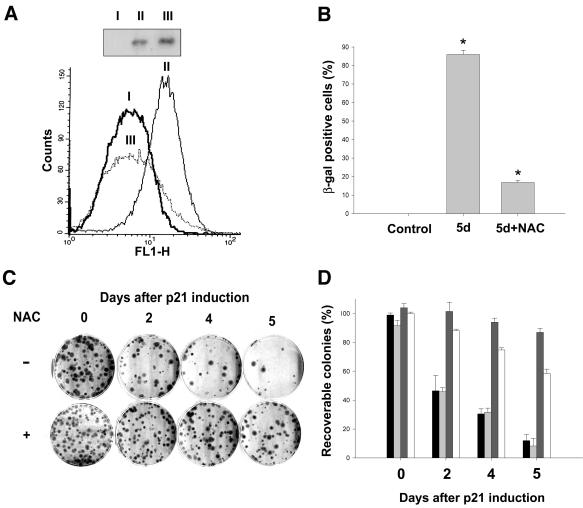Fig. 3. Effects of NAC on the growth arrest/senescence phenotype of EJp21 cells. (A) ROS levels of EJp21 cells (I) in the presence of tetracycline, (II) after 5 days of p21 induction and (III) after 5 days of p21 induction with the addition of 10 mM NAC. Immunoblot analysis shows p21 expression levels in these cells. (B) The percentage of SA-β-gal-positive cells in EJp21 cells induced to express p21 by tet removal for 5 days in the presence or absence of 10 mM NAC. Control cells were kept in tet and no NAC for the duration of the experiment. Results represent mean values of two independent measures, and error bars show the standard deviation. *P <0.0001. (C) Representative plates from a colony formation assay, in which ∼100 cells were plated initially. Cells were maintained in the absence of tet for 0 (Control), 2, 4 or 5 days, and then tet was re-added to the medium. Cells were cultured for 14 more days followed by 10% formalin fixation and Giemsa staining. (D) Percentage of recoverable colonies for each condition described above, normalized to the number of colonies in the control plate. Bars correspond, from left to right, to control plates (black) and plates treated with 10 mM N-acetyl-l-alanine (light gray), 10 mM NAC (dark gray) or 2 mM GSH (white). Results represent mean values of at least two experiments, and error bars show the standard deviation.

An official website of the United States government
Here's how you know
Official websites use .gov
A
.gov website belongs to an official
government organization in the United States.
Secure .gov websites use HTTPS
A lock (
) or https:// means you've safely
connected to the .gov website. Share sensitive
information only on official, secure websites.
